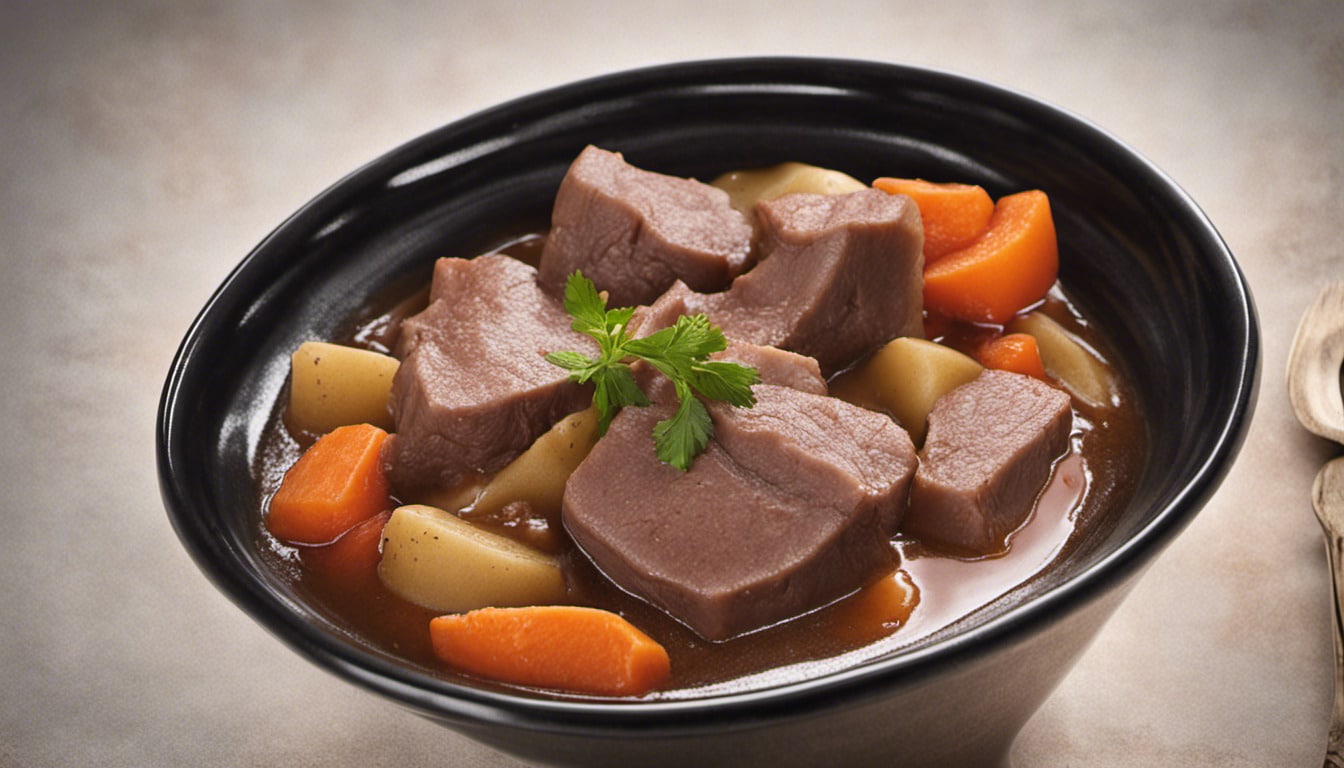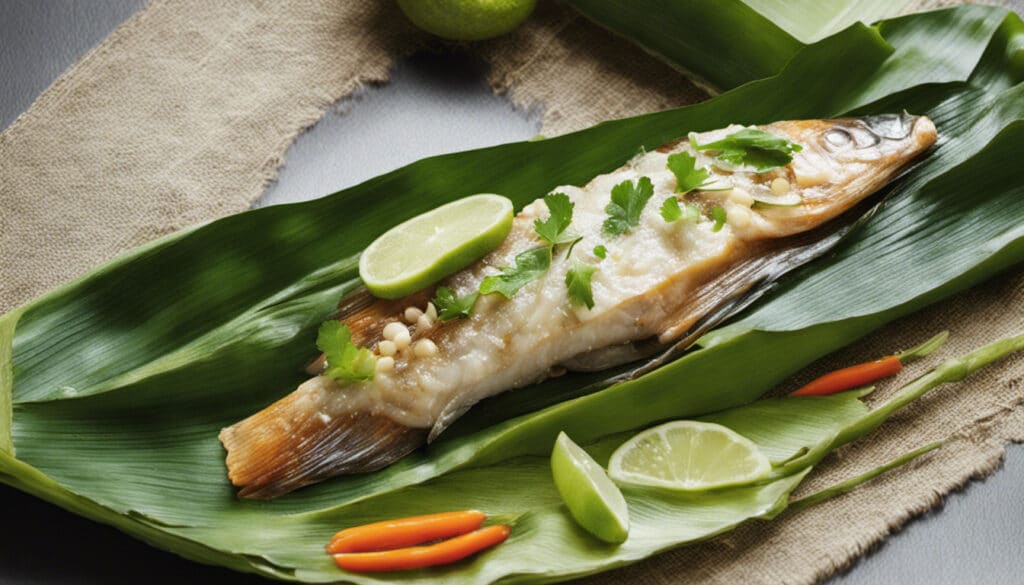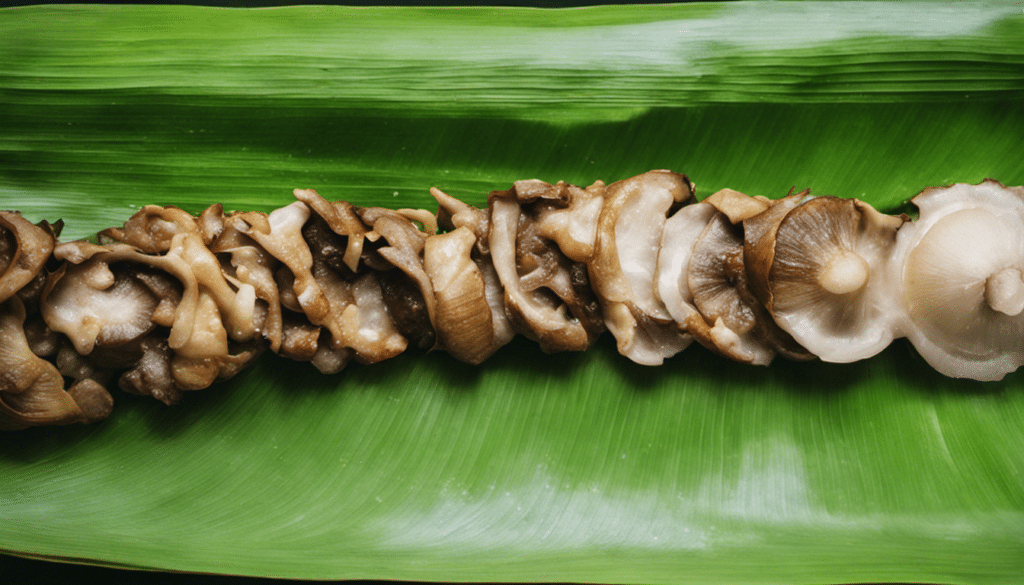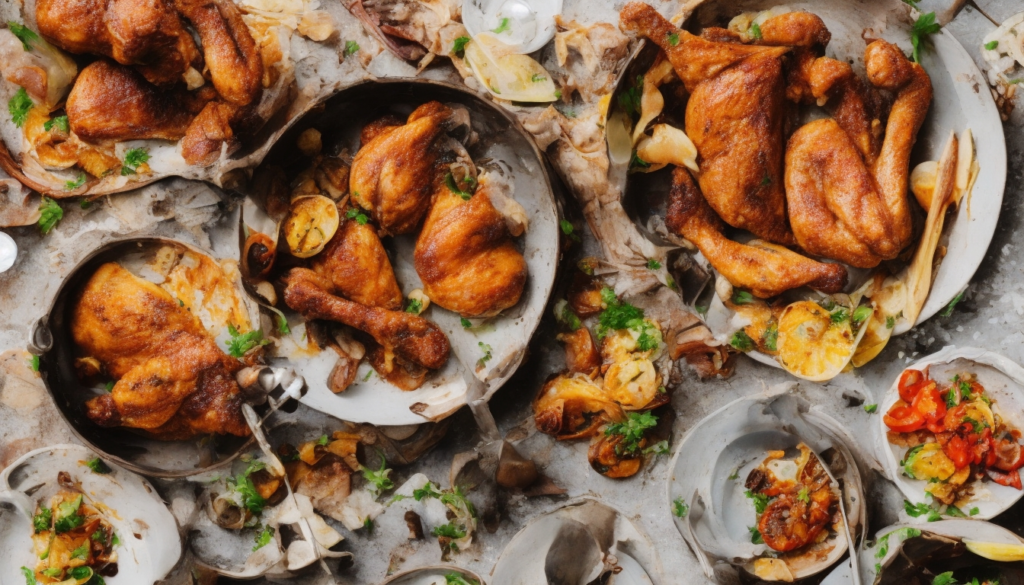| Prep: 30 mins | Cook: 3 hours | Difficulty: Medium | Serves: 6 |
| kcal | fat | saturates | carbs |
| 420 | 25g | 10g | 25g |
| sugars | fibre | protein | salt |
| 8g | 3g | 35g | 1.2g |
Why I Love Indonesian Beef Tongue Stew
When I first tasted the Indonesian Beef Tongue Stew, I was transported to a whole new world of flavors, unlike anything I’ve experienced in my culinary journeys before. As a culinary enthusiast, this delightfully exotic dish struck a chord with me instantly and has since been one of my personal-favourite recipes to revisit from time to time.
A Healthy and Unexpected Fusion
Despite being born and raised on the West Coast, my palate has always been curious and open to flavors from different corners of the world. This Beef Tongue Stew, an Indonesian classic, beautifully marries the spicy and fragrant notes of Southeast Asian cuisine with the hearty comfort of American dishes. It’s an unexpected fusion, bridging my West Coast health-conscious approach and the intriguing flavors of the Indonesian archipelago.
The incorporation of incredibly healthy ingredients such as turmeric, a potent anti-inflammatory, and heart-healthy garlic in the Beef Tongue Stew meets my desire for wholesome food. As a mother of three, I am constantly on the lookout for recipes that are not only rich in flavors but also have a strong nutritional profile, making this hearty dish a winner in my book.
The Charm of Indonesian Cuisine
What I particularly love about Indonesian cuisine, and this stew in particular, is its ability to balance flavors so seamlessly. The fiery red chilies, delicate kaffir lime leaves, tangy tamarind paste, and pungent garlic and onion come together to create a multi-layered, aromatic base that is wonderfully warming and comforting.
The dish also reflects the philosophy of Indonesian cuisine – to harmonize different tastes and textures. The tenderness of the beef tongue against the crunch of the celery and the slight sourness of the tomatoes creates a delightful medley of textures that is unforgettable.
Every mouthful of the Beef Tongue Stew is a lucid reminder of why I fell in love with it in the first place and the memory of Chef Rick Stein’s version, which first ignited my interest in Indonesian cooking. He may not have inspired this recipe directly, but his passion for the cuisine surely played a part in my curiosity and exploration of it. This Beef Tongue Stew is a homage, not just to the Indonesian culinary heritage, but also to the thrilling journey of discovering new worlds of flavor.
With ingredients that expand my horizons and a recipe that reminds me of culinary journeys past, this Indonesian Beef Tongue Stew is a dish that continues to capture my culinary imagination and heart.
What You’ll Need
- 2 lbs beef tongue
- 2 tablespoons cooking oil
- 3 cloves garlic, minced
- 1 large onion, finely chopped
- 2 red chilies, de-seeded and sliced
- 1 teaspoon ground turmeric
- 1 tablespoon ground coriander
- 1/2 teaspoon black pepper
- 2 stalks lemongrass, bruised and tied into a knot
- 3 kaffir lime leaves, torn
- 2 bay leaves
- 1.5 quarts beef broth
- 2 tablespoons soy sauce
- 1 tablespoon brown sugar
- 1 teaspoon tamarind paste
- Salt to taste
- 2 medium tomatoes, quartered
- 1/2 cup finely chopped celery
- Cilantro to garnish
Method
Step One:
Begin by cleaning and rinsing the beef tongue thoroughly. Then add 1 tablespoon of the cooking oil in a large pan over medium heat. Once heated, add the beef tongue and sear all sides until slightly browned. Remove the tongue from the pan and set aside.
Step Two:
Using the same pan, add the remaining tablespoon of cooking oil. Once heated, add in the minced garlic, chopped onion, red chilies, ground turmeric, and ground coriander. Stir until fragrant, making sure the onion and garlic don’t burn.
Step Three:
Return the seared beef tongue into the pan. Add black pepper, the bruised and knotted stalks of lemongrass, the torn kaffir lime leaves, the bay leaves, and the beef broth. Then, stir in the soy sauce, brown sugar, tamarind paste, and salt to taste.
Step Four:
Bring the mixture in the pan to a simmer over low heat. Cover the pan and allow the stew to cook for approximately 2-3 hours until the beef tongue becomes tender. Spice levels can be adjusted to taste.
Step Five:
After the stew has simmered and the beef tongue is tender, add the quartered tomatoes and chopped celery. Allow the stew to simmer for another 15-20 minutes for these additional ingredients to soften and blend with the stew.
Step Six:
After the stew has cooked, it’s ready to be served. Carefully remove the stalks of lemongrass, bay leaves, and kaffir lime leaves. Cut the tender beef tongue into slices then ladle the stew into bowls. Garnish each bowl with fresh cilantro to enhance flavor and presentation.




